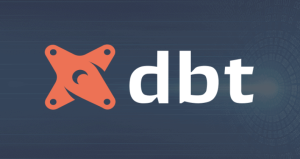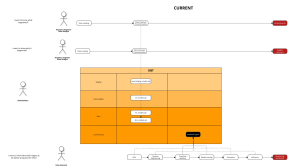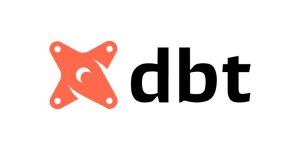
As more and more organizations turn to the cloud to modernize their infrastructure and workloads, data as a service, or DaaS, is becoming an increasingly popular solution for data integration, management, storage, and analytics. By embracing DaaS, companies can improve the agility of data workloads, reduce time-to-insight, and increase the reliability and integrity of their data.
Learn what DaaS means, why and how companies are leveraging it, and how to get started with a cloud-first, DaaS-based strategy for data integration, storage, and management.
What is data as a service?
Data as a service (DaaS) is a data management strategy that uses the cloud to deliver data storage, integration, processing, and/or analytics services via a network connection.
DaaS is similar to software as a service, or SaaS, a cloud computing strategy that involves delivering applications to end-users over the network, rather than having them run applications locally on their devices. Just as SaaS removes the need to install and manage software locally, DaaS outsources most data storage, integration, and processing operations to the cloud.
While the SaaS model has been popular for more than a decade, DaaS is a concept that is only now beginning to see widespread adoption. That is due in part to the fact that generic cloud computing services were not initially designed for handling massive data workloads; instead, they catered to application hosting and basic data storage (as opposed to data integration, analytics, and processing). Processing large data sets via the network was also difficult in the earlier days of cloud computing, when bandwidth was often limited.
Today, however, the advent of low-cost cloud storage and bandwidth, combined with cloud-based platforms designed specifically for fast, large-scale data management and processing, has made DaaS just as practical and beneficial as SaaS.
Benefits of data as a service
Compared to on-premises data storage and management, DaaS provides several key advantages with regard to speed, reliability, and performance. They include:
- Minimal setup time: Organizations can begin storing and processing data almost immediately using a DaaS solution.
- Improved functionality: Cloud infrastructure is less likely to fail, making DaaS workloads less prone to downtime or disruptions.
- Greater flexibility: DaaS is more scalable and flexible than the on-premises alternative, since more resources can be allocated to cloud workloads instantaneously.
- Cost savings: Data management and processing costs are easier to optimize with a DaaS solution. Companies can allocate just the right amount of resources to their data workloads in the cloud and increase or decrease those allocations as needs change.
- Automated maintenance: The tools and services on DaaS platforms are automatically managed and kept up-to-date by the DaaS provider, eliminating the need for end-users to manage the tools themselves.
- Smaller staff requirements: When using a DaaS platform, organizations do not need to maintain in-house staff who specialize in data tool set up and management. These tasks are handled by the DaaS provider.
Challenges of data as a service
While DaaS offers many benefits, it also creates special challenges.
- Unique security considerations: Because DaaS requires organizations to move data into cloud infrastructure and transfer data over the network, it can create security risks that would not exist if data remained on local, behind-the-firewall infrastructure. These challenges can be mitigated using encryption for data in transit.
- Additional compliance steps: For some organizations, compliance challenges may also arise when sensitive data is moved into a cloud environment. This does not mean that data can’t be integrated or managed in the cloud, but simply that companies subject to special data compliance requirements must ensure that they meet those requirements with their DaaS solution. For example, they may need to host their DaaS on cloud servers located in a specific country in order to remain compliant.
- Potentially limited capabilities: In some cases, DaaS platforms may limit the number of tools available for working with data. Users are able to work only with the tools that are hosted on or compatible with their DaaS platform, rather than being able to use any tools of their choice to set up their own data-processing solutions. Choosing a DaaS solution that offers maximum flexibility in choosing tools mitigates this challenge.
- Data transfer timing: Transferring large volumes of data into a DaaS platform can take time due to network bandwidth limitations. Depending on how frequently your organization needs to move data into a DaaS platform, this may or may not pose a serious challenge. If data bandwidth is limited, data compression and edge computing strategies can help to accelerate transfer speeds.
Successful DaaS adoption: Two examples
DaaS solutions have been slower to catch on than SaaS and other traditional cloud-based services. However, as DaaS matures and the cloud becomes increasingly central to modern business operations, a number of organizations are now leveraging DaaS successfully.
PointsBet uses DaaS to scale quickly while remaining compliant
PointsBet uses a cloud-based data solution to manage its unique compliance and scaling requirements. The company can easily adjust its operations to meet the flucuating demand of online gaming and ensure its operating within local and international government regulations.
DMD Marketing accelerates data operations with DaaS
DMD Marketing Corp. has adopted a cloud-first approach to data management to give its users faster access to their data and, by extension, reduce data processing times. The company is also able to quickly refresh data thanks to cloud-based data management, giving them an edge over competitors.
How to get started with data as a service
Although getting started with DaaS may seem intimidating, given the fact that DaaS is still a relatively new type of solution, the process is actually simple.
It is especially simple because DaaS eliminates much of the setup and preparation work associated with building an on-premises data processing solution. And due to the simplicity of deploying a DaaS solution, and the availability of technical support services from DaaS providers, the process does not require your company to have specialized staff on hand.
The core steps for getting started with DaaS include:
- Choose a DaaS solution. Factors to weigh when selecting a DaaS offering include price, scalability, reliability, flexibility, and how easy it is to integrate the DaaS with existing workflows and ingest data into it.
- Sign up for and activate your DaaS platform.
- Migrate data into the DaaS solution. Depending on how much data you have to migrate and the speed of the network connection between your local infrastructure and your DaaS, data migration may or may not require a great deal of time.
- Begin leveraging the DaaS platform to deliver faster, more reliable data integration and data insights.
The cloud and the future of data as a service
DaaS is part of a broader switch by companies to cloud-first strategies. Given the pervasiveness of a focus on the cloud across a variety of industries, and among companies both large and small, there is good reason to believe that DaaS adoption will continue to rise alongside other cloud services.

In 2018, Garnter estimated that DaaS will continue to grow for five to 10 more years.
It’s worth noting, too, that DaaS is poised to help drive interest in cloud-first architectures even among companies that have not previously leveraged the cloud in a major way. In the earlier years of cloud computing’s history, it was generally only companies that could benefit from SaaS delivery models that adopted the cloud on a large scale. Now, however, the cloud has become a powerful solution for data workloads as well.
Thus, whether your company already has extensive experience with the cloud, or has not previously thought of itself as operating according to a cloud-first model, DaaS is one example of a way for companies to leverage the speed and reliability that the cloud offers.
Resources: Talend.com
- Joon Solutions Achieves the Data Analytics Partner Specialization in Google Cloud Partner Advantage Program - May 27, 2022
- Top 5 Digital Transformation Trends in 2021 and Beyond - September 21, 2021
- 6 Biggest Data Strategy Mistakes Every Company Must Avoid - September 13, 2021



